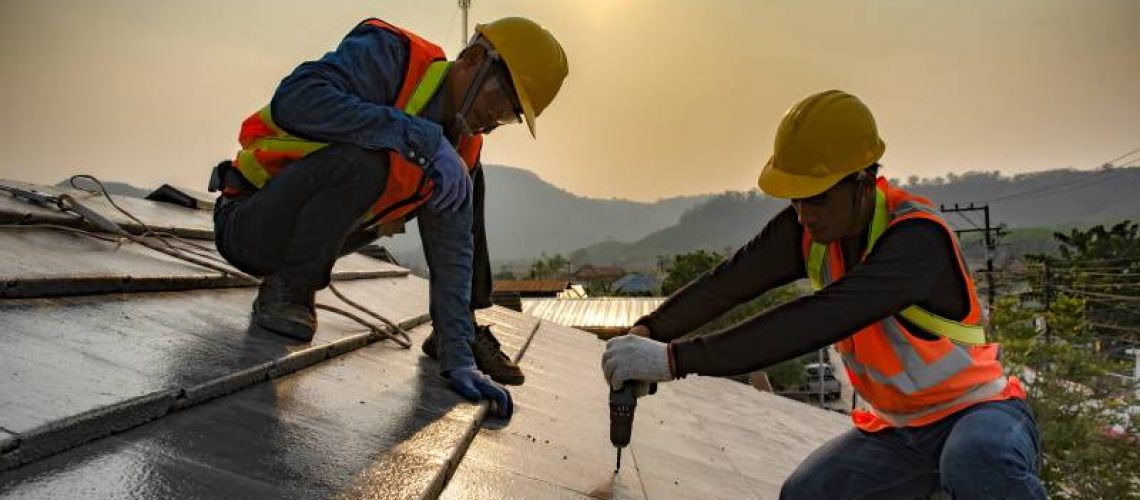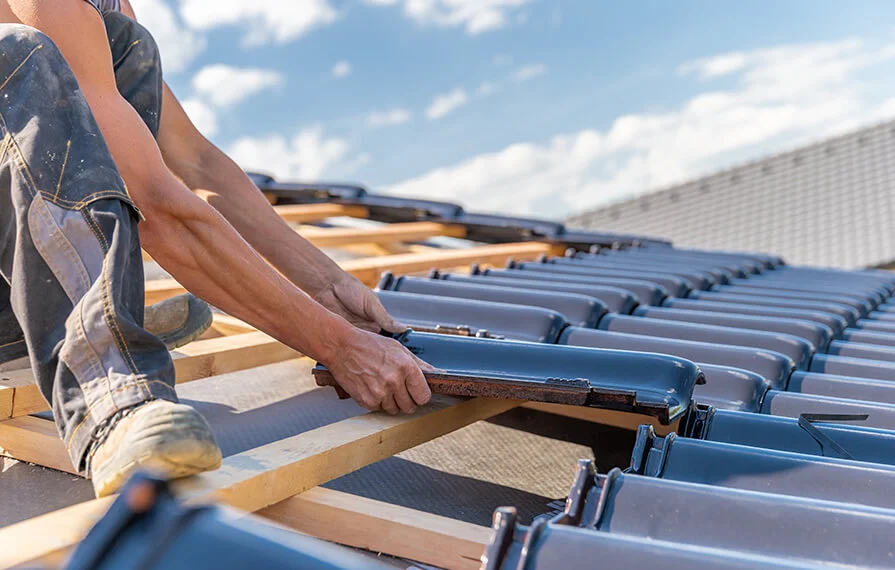Trusted Cleveland Roofing Specialists for Comprehensive Roofing Needs
A Comprehensive Overview to Effective Roof Covering Flat Roof Installation
The intricacies of flat roof covering installation need a meticulous method, beginning with an extensive understanding of different flat roof types and the necessary products needed for ideal performance. A successful setup hinges not only on the option of products however likewise on the preparation and implementation of each action included in the procedure.
Recognizing Flat Roofing System Types
When considering flat roof coverings, it is vital to understand the numerous kinds offered, as each offers unique advantages and negative aspects customized to specific requirements. The most typical kinds of level roofs include Built-Up Roof covering (BUR), Changed Bitumen, and Single-Ply membrane layers.
Built-Up Roof covering is composed of multiple layers of asphalt and crushed rock, offering excellent sturdiness and weather resistance. It is specifically helpful in locations susceptible to extreme climate condition yet may need even more maintenance because of its intricate building and construction.
Changed Bitumen is a preferred option for its simplicity of installment and versatility. It typically uses a torch-applied or self-adhesive approach, which can be beneficial for quick fixings and lasting performance. Its life expectancy can be shorter contrasted to BUR.
Single-Ply membrane layers, consisting of Thermoplastic Olefin (TPO) and Ethylene Propylene Diene Monomer (EPDM), are acknowledged for their light-weight nature and power efficiency. These products are usually chosen for commercial buildings due to their cost-effectiveness and convenience of setup (Cleveland Roofing Specialists). They might not provide the same level of insulation as various other choices.
Each roofing kind requires cautious consideration based on climate, budget, and specific task requirements.
Important Materials for Flat Roof
A variety of important materials are critical for the successful installation of level roof. The selection of materials straight effects sturdiness, efficiency, and general performance.
Among the primary products is the roof membrane, which can be created from different substances such as thermoplastic polyolefin (TPO), ethylene propylene diene monomer (EPDM), or PVC. Each kind offers one-of-a-kind advantages, consisting of UV resistance and flexibility, which are crucial for long term efficiency.
Along with the membrane layer, insulation products play a substantial function in energy efficiency. Inflexible foam boards or polyisocyanurate insulation are prominent options, as they offer superb thermal resistance and wetness monitoring.
Moreover, roof covering adhesives and sealants are necessary for making sure a watertight installation. These products need to be compatible with the picked membrane layer to prevent wear and tear gradually.
Preparing for Installation
Appropriate preparation is necessary for a successful level roof installation, as it lays the groundwork for a efficient and long lasting roof covering system. Begin by performing an extensive evaluation of the existing roofing framework. Seek indicators of damage, including leaks, rot, or insufficient water drainage, which might compromise the new roof. Guarantee that the underlying materials are sound and can support the weight of the brand-new roof parts.
Next, gather all necessary devices and materials, ensuring that they fulfill market criteria. This includes waterproof membrane layers, insulation, blinking, and fasteners. Acquaint on your own with the manufacturer's requirements, as adherence to these guidelines is critical for warranty objectives.
Think about climate problems; prevent setup throughout heavy rainfall or extreme temperatures, which can influence material efficiency. By taking these primary steps, you can enhance the possibility of an effective level roof covering setup that fulfills both visual and architectural needs.
Step-by-Step Installment Process
With the foundation developed via detailed prep work, the following stage involves executing the flat roofing system installment methodically. Begin by ensuring that the structural deck is cost-free and clean from debris. Next, install a vapor barrier to avoid dampness accumulation under the roof material. This step is critical for keeping the roofing's honesty with time.
Following the vapor barrier installment, put you can try here down insulation boards, guaranteeing they fit tightly together to reduce thermal connecting. Secure the insulation with appropriate bolts based on the roofing system type and regional building ordinance. As soon as the insulation is in place, it's time to apply the roof covering membrane. Relying on the selected product-- such as TPO, EPDM, or modified bitumen-- set up the membrane layer according to the supplier's specifications.
Ensure appropriate overlap at sides and seams to develop a leak-proof seal. Utilize adhesives, mechanical bolts, or heat welding as called for. Set up blinking around perimeters, vents, and any type of roof penetrations to boost waterproofing. After installment, conduct an extensive inspection to determine any kind of prospective issues before wrapping up the task, guaranteeing a dependable navigate to this site and robust level roof system.
Upkeep Tips for Longevity
Regular maintenance is necessary to guarantee the durability and performance of a flat roofing. Among the key jobs is to perform regular inspections a minimum of twice a year, ideally in springtime and loss. Throughout these evaluations, search for signs of wear, such as blisters, splits, or pooling water, which can indicate underlying issues.

Ensuring appropriate drain is important to avoid water accumulation. Check and clear gutters, downspouts, and scuppers to guarantee unhampered water circulation. Additionally, check seals around vents, skylights, and various other penetrations for any type of indicators of deterioration, using caulk or sealant as needed to preserve a leak-proof obstacle.
Last but not least, think about specialist upkeep solutions every couple of years for extensive maintenances. By adhering to these upkeep tips, you can substantially prolong the life of your flat roofing, guaranteeing it continues to be a trusted shield against the aspects.
Final Thought
Efficient flat roofing system installment requires an organized method incorporating thorough inspections, material option, and precise prep work. Sticking to the detailed steps throughout the setup process ensures the correct application of roof membranes and insulation while enhancing waterproofing with effective flashing setup.
The complexities of level roof setup need a precise method, starting with an extensive understanding of different level roof kinds and the necessary products required for optimal performance.Proper preparation is vital have a peek at these guys for an effective level roof covering installation, as it lays the foundation for a long lasting and effective roofing system. After installment, conduct a detailed examination to determine any kind of potential problems prior to ending the job, guaranteeing a durable and dependable level roof system.
